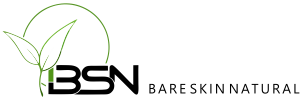I went to a very famous market in lagos recently called balogun market, and amidst all the hustle, bustle and jostling of activities that seemed to be a constant feature, as well as the amazingly wide array of goods and products available for purchase in the market. I could also notice the unnaturally “yellow” tone on most of the women I met there.
I say “unnatural” because the “yellowing” is not uniform all over the body, but seems to be more concentrated on the face while the other parts of the body seemed significantly darker. I suspect that these women are victims (knowingly or unknowingly) of the various cheap and grossly unhealthy, mostly imported skincare products that have in them a high levels of hydroquinone or mercury compounds which, even thought they lighten the skin, do have very undesirable side effects on the human body both externally and internally when used over a prolonged period of time.
In previous post here:http://bareskinnaturals.com/blog/so-you-want-to-have-a-lighter-skin-colour/
I had mentioned a few natural skinlighteners. and I just feel the need to metion them one more time, in detail.
So if you must lighten your skin! At least be informed about the fact that there are healthier more natural options out there and make the effort to ask for the full list of ingredients in the products you are buying or read the ingredient list where provided to ensure that you know exactly what you are buying.
.
Natural skin lighteners
- Vitamin c
This is more like a skin brightener than a lightener. Skin brighteners will make your natural complexion brighter and healthier, as well as glowing, whereas skin lighteners will make your natural complexion one or more shades lighter than your natural skin tone.
Vitamin c brightens the complexion by slowing down hyperactive melanocytes ( specialised skin cell that produces the protective skin-darkening pigment melanin) hence reducing skin darkening.
Vitamin c not only brightens the complexion but also plays an important role in the production of collagen fibres that help to support skin and keep it firm.
2. Kojic acid
White crystalline powder derived from a fungus in Asia. It is usually used as a natural alternative to hydroquinone. It works by inhibiting the function of the tyrosinase.The tyrosinase is responsible for the first step in the production of melanin, therefore by inhibiting the function of the tyrosinase, the melanocyts are not able to produce enough melanin and hence the skin gets lighter.
Kojic acid is also an antioxidant and suitable for sun damaged and sensitive skin.
3. Liquorice Extract
The liquorice plant is a legume and the juice derived from its roots is useful for treating all kinds of skin ailments. The compound glabridim in liquorice is found to absorb UVA&UVB rays and act as a powerful skin whitening agent.
Liquorice works the same way as kojic acid by inhibiting the activity of the tyrosinase enzyme by as much as 50% without damaging skin cells. It is also useful for in the treatment of post inflammatory hyperpigmentataion as well as reverse acne scars. It can also help to soothe skin and reduce redness.
4. Vitamin B3 (Niacinamide)
Niacinamides role as a coenzyme precursor may explain the multiple roles it has in skin. Topical niacinamide in skin is described to have severeal functions on aging skin, incuding improved skin barrier, hypergimentation, redness, fine lines etc.
Additionally, nicinamide inflences skin pigmentation by down regulating the transfer of the melanosomes from the melanocytes to the keratinocytes (without inhibiting tyrosinase activity or cell proliferation) by 35 to 68%.
5. Arbutin
A potent antioxidant that is found naturally in cranberries, wheat, pears and bearberry leaves.
It works by inhibiting the activity of the tyrosinase, inhibiting the melanosome maturation and finally, converts to hydroquinone in the skin, thereby allowing for a controlled release, hence resulting in less irritation.
6. Azelaic acid
Naturally sourced from cultures of grain products, casotor beans or by the oxygenation of oleic acid found in milk. Azelaic acid selectively lightens skin where excessively active melanocytes are found
7. Lactic acid
Derived from sour milk and sugars. Works as a moisturiser and antimicrobial agent. works by increasing the exfoliation of melanin filled keratinocytes and suppresses the formation of tyrosnase.
8. Mulberry root extract
A potent antioxidant and anti inflammatory agent that inhibits L-DOPA oxidase activity of tyrosinase. Studies show a 50% reduction in tyrosinase activity following application.
9. Phenylethyl rescorcinol
Works by inhibiting conversion of tyrosinase to L-DOPA
10. Retinoids (vitamin A)
Stimulates collagen production, elastin and glycosaminoglycan production and inhibits tyrosinase activity as well as enhances the penetration of actives through the stratum corneum.
11. Undecylenoyl Phenylalanine
12. Cucumber
Lightens dark circes under eyes, but can also lighten other areas. extract is called phenylanin and interfers with transfer of melanin to cells.
2 comments
Leave a comment
You must be logged in to post a comment.

Thanks for such a beautiful and full detailed information. please i wanted to know where some of this natural ingredient can be gotten in our environment. Can one get them in chemical shops or where cosmetics are sold. PLS help to get point of sale. thanks in anticipation
.
Hello, Thanks for your comment.
Most of these ingredients can be bought from specialised websites that sell natural skincare ingredients. There are not as many within our environment as can be obtained outside our country especially in Europe and America.
But we do have a few locally around us like http://organic.ng/ and http://tidesmark.com/.
These are a few that I am aware of, please anyone who has links to more cosmetic ingredients shops can leave a link